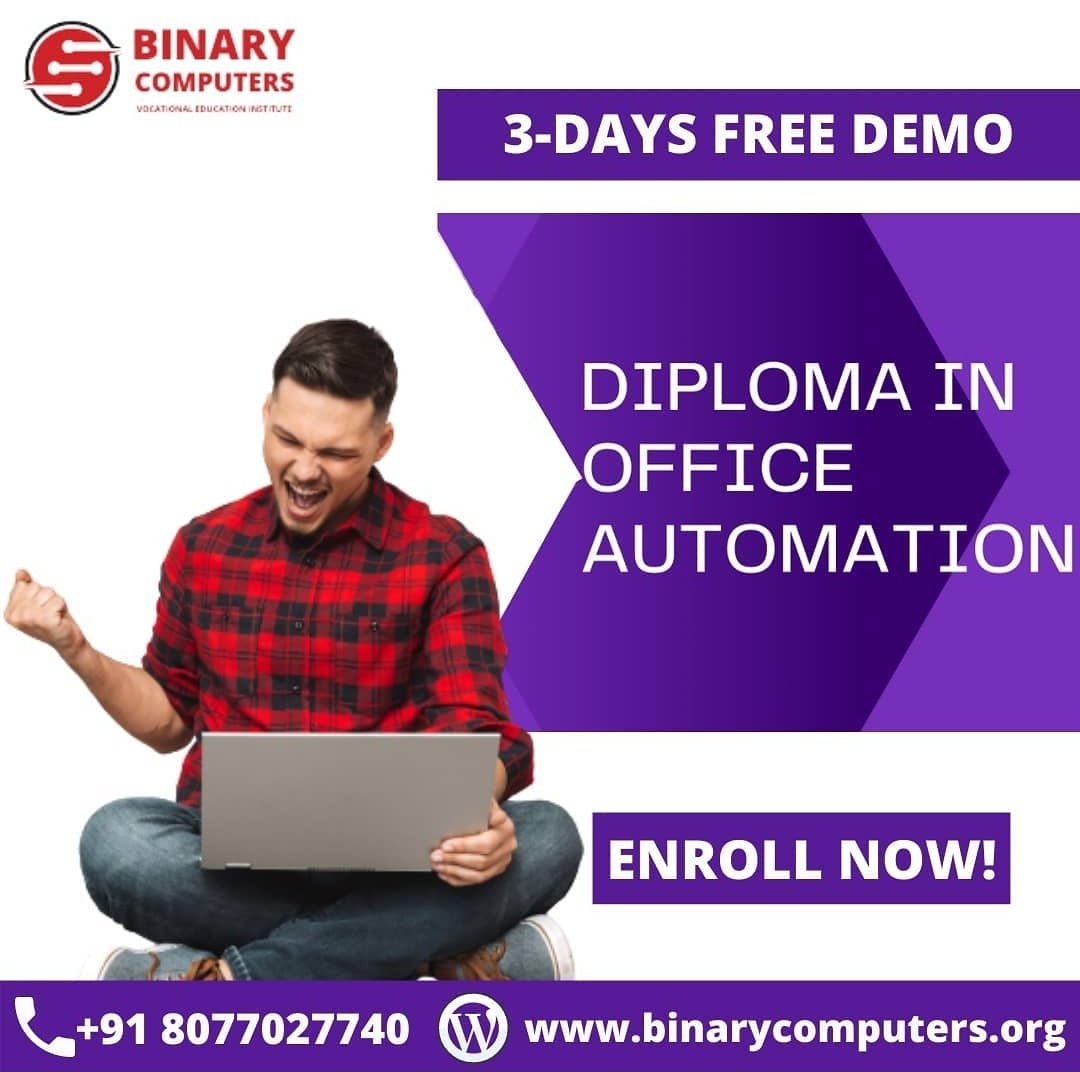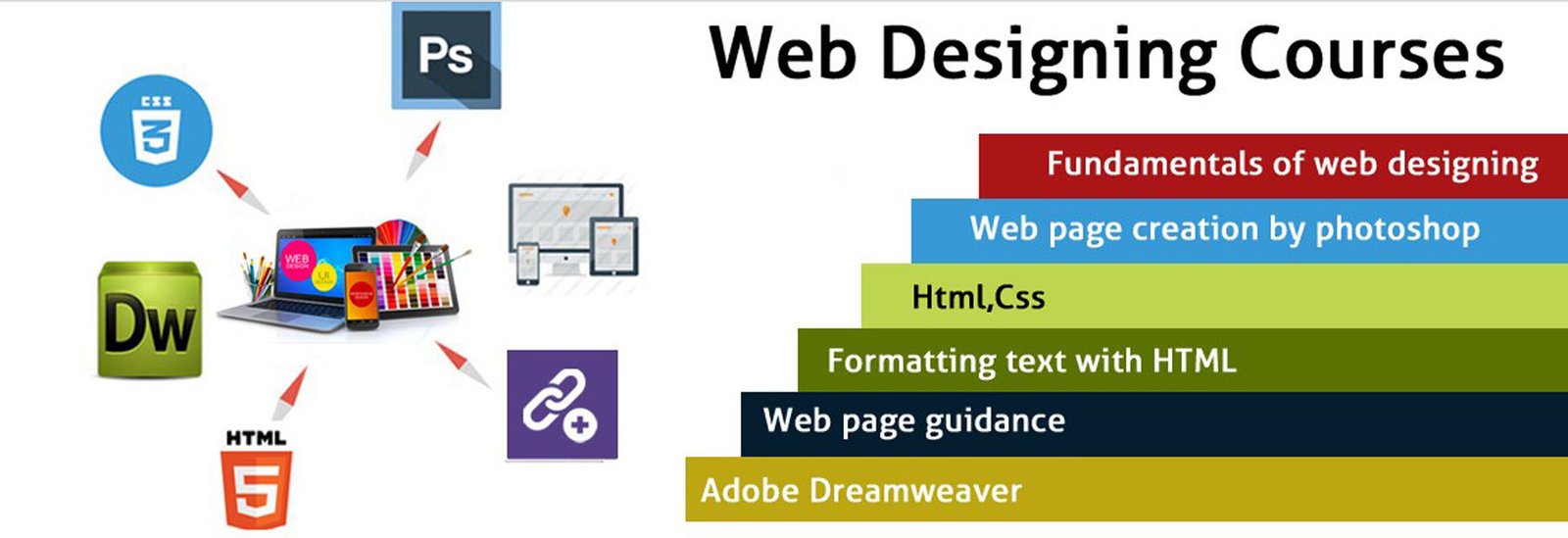Diploma in Office Automation in Bareilly

description
Introduction of computer
Operating computer using GUI based operating system
Word processing
Spread sheet
Communicating using internet
Html basic
Communication and collaboration

Computer : is an electronic device that operates (works) under the control of programs stored in its own memory unit.
A computer is an electronic machine that processes raw data to give information as output.An electronic device that accepts data as input, and transforms it under the influence of a set of special instructions called Programs, to produce the desired output (referred to as Information).Explanations;A computer is described as an electronic device because; it is made up of electronic components and uses electric energy (such as electricity) to operate.A computer has an internal memory, which stores data & instructions temporarily awaiting processing, and even holds the intermediate result (information) before it is communicated to the recipients through the Output devices.It works on the data using the instructions issued, means that, the computer cannot do any useful job on its own. It can only work as per the set of instructions issued. Diploma in Office automation in Bareilly. A computer will accept data in one form and produce it in another form. The data is normally held within the computer as it is being processed.
There are two types/forms of data:a).
Digital (discrete) data: Digital data is discrete in nature. It must be represented in form of numbers, alphabets or symbols for it to be processed by a computer. Digital data is obtained by counting. E.g. 1, 2, 3 …b).
Analogue (continuous) data: Analogue data is continuous in nature. It must be represented in physical nature in order to be processed by the computer. Analogue data is obtained by measurement. E.g. Pressure, Temperature, Humidity, Lengths or currents, etc. The output is in form of smooth graphs from which the data can be read. Diploma in Office automation in Bareilly.
a). 1st Generation computers (1940s & early 1950s).• The computers were built using Vacuum tubes, and the speed was measured in Milliseconds. E.g., a computer could perform 5,000 additions & 300 multiplications per second). 2nd Generation computers (1950s & early 1960s).Were built using Transistors. Their operation speeds increased & were measured in Microseconds. E.g., a computer could perform 1 million additions per second). Mid 1960s.Integrated Circuit (IC), which combined a no. of transistors & diodes together on a silicon chip, was developed. The speed increased to tens of millions of operations per second). In 1971, Intel Corporation produced a very small, single chip called a Microprocessor, which could perform all the operations on the computer’s processor. The chip contained about 1,600 transistorse). Today’s microprocessors are very powerful, cheaper & more reliable due to the use of the Large Scale Integration (LSI) & Very Large scale Integration (VLSI) technologies, which combines hundreds of thousands of components onto a single chip The computer speeds are now measured in Nanoseconds & Picoseconds.
TYPES OF COMPUTER
Analog computer
Analog computer measures and answer the questions by the method of “HOW MUCH”. The input data is not a number infect a physical quantity like temp, pressure, speed, velocity.
Signals are continuous of (0 to 10 V)Accuracy 1% Approximately High speed Output is continuous
Time is wasted in transmission time
ANALOG COMPUTER
DIGITAL COMPUTERS
Digital computer counts and answer the questions by the method of “HOW Many”. The input data is represented by a number. These are used for the logical and arithmetic operations. Diploma in Office automation in Bareilly.
Signals are two level of (0 V or 5 V)Accuracy unlimited low speed sequential as well as parallel processing Output is continuous but obtain when computation is completed. MICRO COMPUTERS
Micro computer are the smallest computer system. There size range from calculator to desktop size. Its CPU is microprocessor. It also known as Grand child Computer.
Application : – personal computer, Multi user system, offices. MINI COMPUTERS
These are also small general purpose system. They are generally more powerful and most useful as compared to micro computer. Mini computer are also known as mid range computer or Child computer.
Application :- Departmental systems, Network Servers, work group system. MAINFRAME COMPUTERS
Mainframe computers are those computers that offer faster processing and grater storage area. The word “main frame” comes from the metal frames. It is also known as Father computer. Diploma in Office automation in Bareilly.
Application – Host computer, Central data base server. SUPER COMPUTERS
Super computer are those computer which are designed for scientific job like whether forecasting and artificial intelligence etc. They are fastest and expensive. A super computer contains a number of CPU which operate in parallel to make it faster. It also known as grand father computer. Application – whether forecasting, weapons research and development

HTML Documents
All HTML documents must start with a document type declaration: <!DOCTYPE html>.
The HTML document itself begins with <html> and ends with </html>.
The visible part of the HTML document is between <body> and </body>.
HTML Headings
HTML headings are defined with the <h1> to <h6> tags.
<h1> defines the most important heading. <h6> defines the least important

